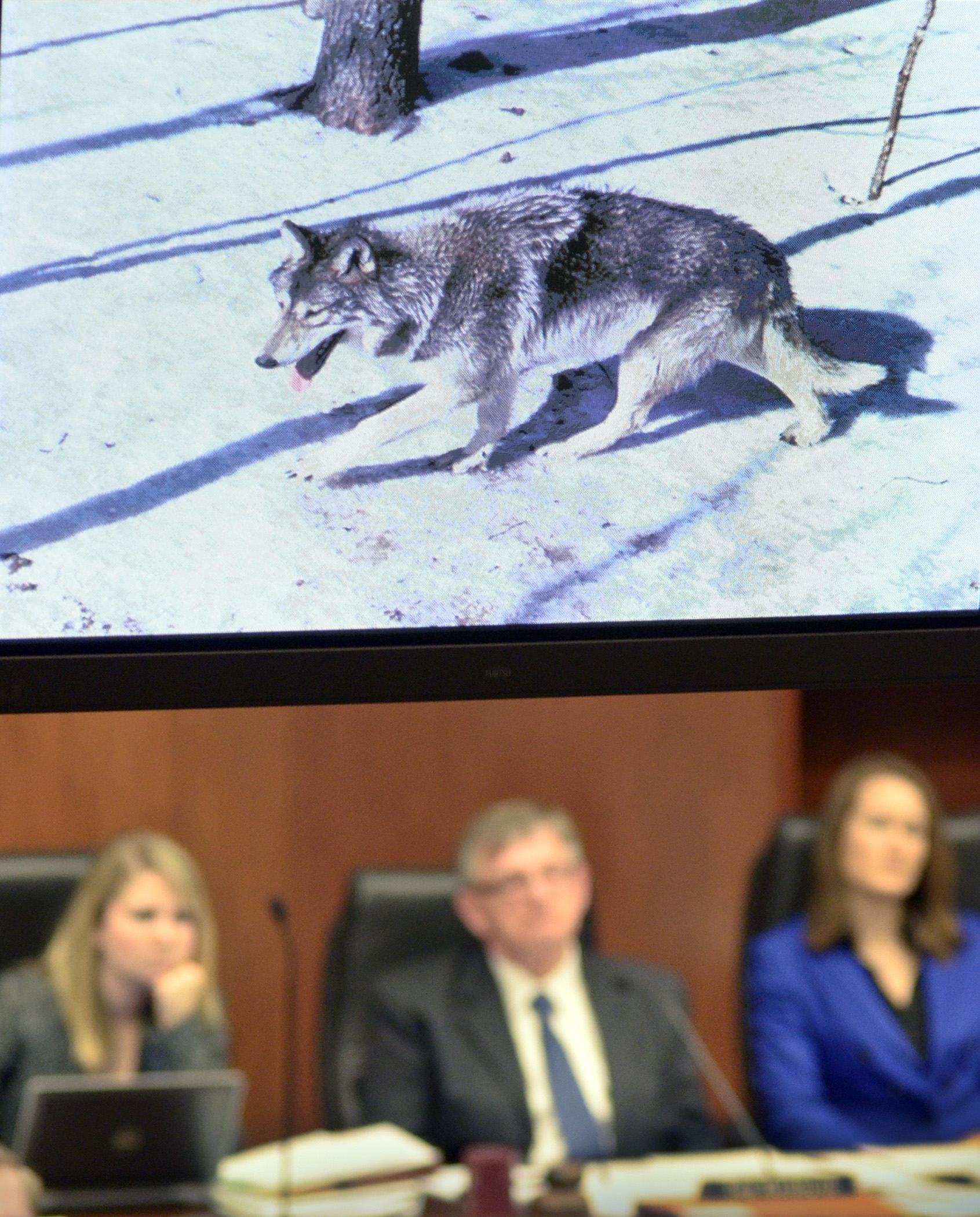Wolf hunt ban frustrates farmers as reimbursement fund dries up

A recent federal court decision leaves Minnesota farmers with few alternatives for protecting their livestock from wolves, even as the state’s fund to reimburse them for those losses has now run dry.
Those were two of the takeaways as the House Mining and Outdoor Recreation Policy Committee met Tuesday to examine the status of wolves in the state and discuss the issues surrounding them.
Blane White, program coordinator for the Department of Agriculture fund meant to compensate farmers for livestock loss due to wolf depredation, was among the testifiers. He told members that as the wolf population has recovered, the number of farms experiencing depredation continues to increase.
“As a result, we have exhausted all available funds and have about 31 claims that we are unable to pay,” White said.
The department is now notifying those farmers it will not be able to reimburse, but is instead providing them information on a new federal program that may be able to help.
The situation was further complicated after a December decision by a federal judge who ruled against an Obama administration effort to remove gray wolves from the endangered species list in the western Great Lakes Region that includes Minnesota.
That ruling effectively bans the hunting and trapping of wolves. The court’s decision means farmers are unable to kill wolves that threaten livestock and must instead appeal to federal authorities, who now have jurisdiction.
A wolf-hunting season in Minnesota was established in 2012, after the state was given the authority earlier that year to manage the wolves within its borders – a population then estimated at 3,000.
Representatives of the Minnesota Farmers’ Union and the Minnesota Farm Bureau also appeared before the committee and voiced concerns about the decision, as did several committee members, who wondered whether funding at the federal level would remain adequate.
Dan Stark, Department of Natural Resources large carnivore specialist, told the committee that 172 wolves were taken for causing damage in 2014, and noted that 295 wolves were taken due to depredation conflicts in 2012 and 130 were taken in 2013.
Stark said the DNR completed a wolf population survey last winter (2013-14) and estimated a population of 2,423, up more than 200 from the point estimate in 2012-13. The DNR is conducting another survey this winter.
Related Articles
Search Session Daily
Advanced Search OptionsPriority Dailies
Ways and Means Committee OKs proposed $512 million supplemental budget on party-line vote
By Mike Cook Meeting more needs or fiscal irresponsibility is one way to sum up the differences among the two parties on a supplemental spending package a year after a $72 billion state budg...
Meeting more needs or fiscal irresponsibility is one way to sum up the differences among the two parties on a supplemental spending package a year after a $72 billion state budg...
Minnesota’s projected budget surplus balloons to $3.7 billion, but fiscal pressure still looms
By Rob Hubbard Just as Minnesota has experienced a warmer winter than usual, so has the state’s budget outlook warmed over the past few months.
On Thursday, Minnesota Management and Budget...
Just as Minnesota has experienced a warmer winter than usual, so has the state’s budget outlook warmed over the past few months.
On Thursday, Minnesota Management and Budget...